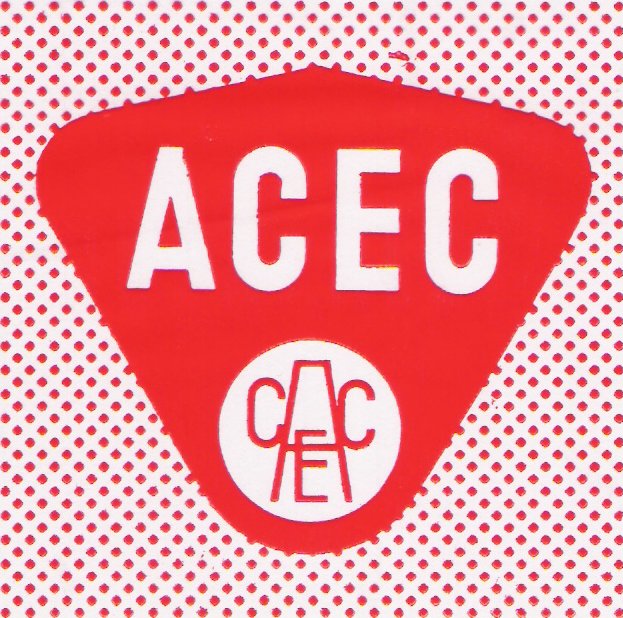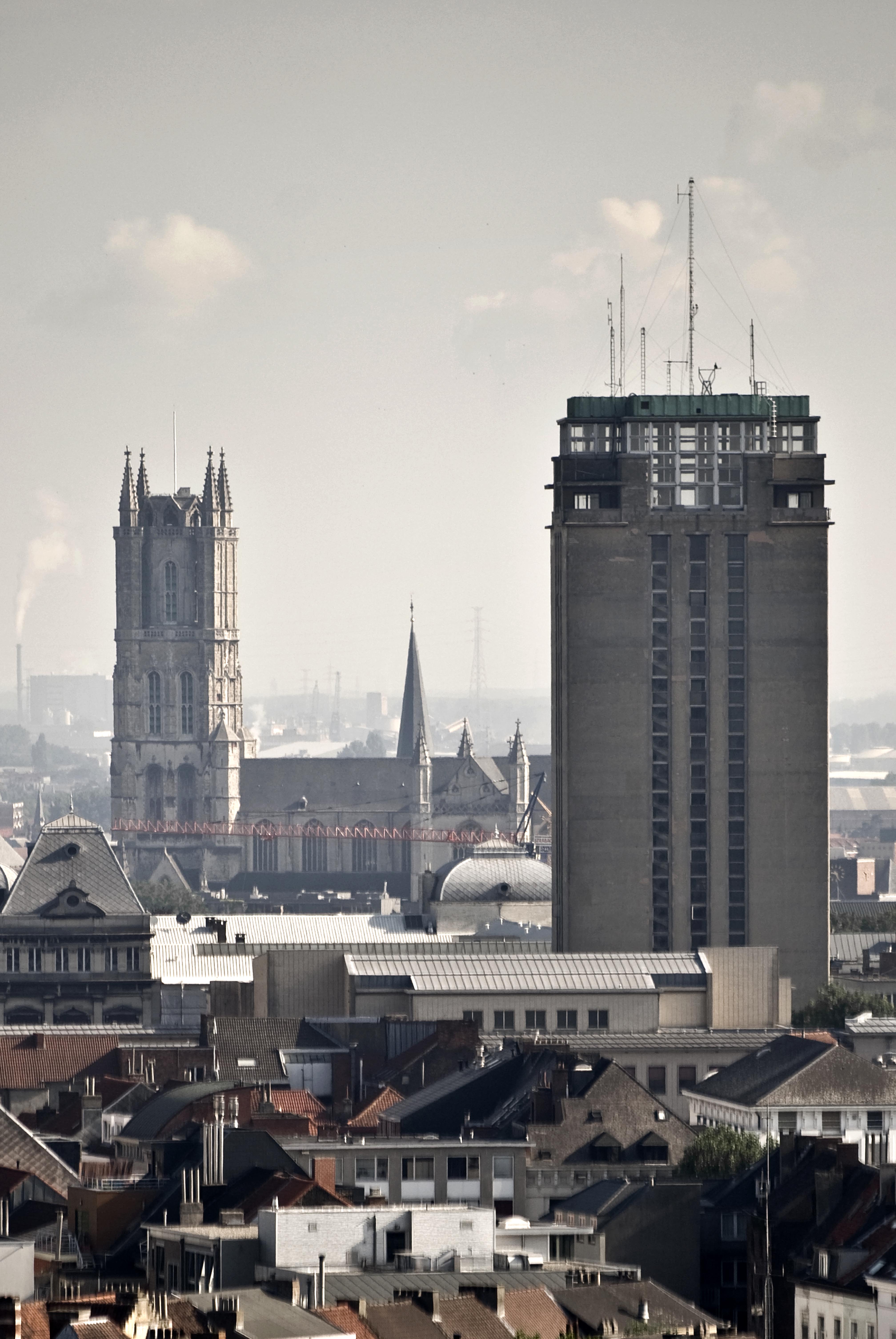|
SNCB Class AM35
NMBS/SNCB Class AM35 (''Automotrice 35'' French language, French for Electric Multiple Unit (EMU) – 1935 [after their year of construction] - in Dutch they were MS35, the MS standing for ''MotorStel'') were electric multiple unit trains operated by the National Railway Company of Belgium (NMBS/SNCB). First used in service on May 5, 1935 (a century to the day after the founding of the Belgian Railways) along the first electric line between Brussels and Antwerp. Twelve Electric Multiple Units consisting of four carriages set ran at 120 kilometres per hour between the two cities. Technical Details The EMUs consisted of two motorized cars at the ends and two infill trailers. Two manufacturers were selected for the power cars: 12 were built by the Société Anonyme la Métallurgique (Nivelles) and fitted with Ateliers de Constructions Electriques de Charleroi, ACEC electrical equipment, the other 12 were assembled by the Ateliers de la Dyle (Leuven) and equipped by SEM (Société d ... [...More Info...] [...Related Items...] OR: [Wikipedia] [Google] [Baidu] |
Société Anonyme La Métallurgique
Tubize (; nl, Tubeke ) is a City status in Belgium, city and Municipalities of Belgium, municipality of Wallonia located in the Belgium, Belgian Walloon Brabant, province of Walloon Brabant. On January 1, 2006 Tubize had a total population of 22,335. The total area is 32.66 km2 which gives a population density of 684 inhabitants per km2. The municipality includes the districts of Clabecq, Oisquercq, Saintes, and Tubize. Bordering Flanders, the town is home to a minority of Dutch-speakers. Ateliers de Tubize Les Ateliers de Tubize locomotive works was located in Tubize. At least six Tubize locomotives are preserved. One (Tubize 2069) in Belgium, two narrow gauge locomotives (2365 & 2369) in Jokioinen Museum Railways, Finland, and one narrow-gauge (Tubize 2179, 2179) in Poland. One locomotive is still in operation on the Pelion railway in Greece. Three are preserved in Iran See also * A.F.C. Tubize References External links * Tubize, Cities in Wallonia Mun ... [...More Info...] [...Related Items...] OR: [Wikipedia] [Google] [Baidu] |
Ateliers De Constructions Electriques De Charleroi
SA Ateliers de Constructions Electriques de Charleroi (abbrev. ACEC) was a Belgian manufacturer of electrical generation, transmission, transport, lighting and industrial equipment, with origins dating to the late 19th century as a successor to the ''Société Électricité et Hydraulique'' founded by Julien Dulait. After World War II the company expanded into electronics, and became a contractor to the nuclear industry. The company was acquired by Westinghouse in 1970; in 1985 Westinghouse's share was acquired by Société Générale de Belgique (SGB) and Compagnie Générale d'Electricité (CGE). The company operated at a loss during the 1980s, and was split and sold; Alstom and its affiliates acquired the majority of the company, along with ABB and Alcatel Bell and others. The remnants of the company were merged into Union Minière in 1989, forming ''ACEC Union Minière''. History Background, 1878–1904 In 1878 Julien Dulait (1855–1926), son of steelworks engineer J ... [...More Info...] [...Related Items...] OR: [Wikipedia] [Google] [Baidu] |
SNCB Multiple Units
french: Société nationale des chemins de fer belgesgerman: Nationale Gesellschaft der Belgischen Eisenbahnen , type = Statutory corporation , industry = Rail Transport , foundation = 1926 , founder = Government of Belgium , location = Avenue de la Porte de Hal/Hallepoortlaan 40 , location_city = 1060 Brussels , key_people = , products = Rail Transport , revenue = €2.296.6 billion (2012) , operating_income = €6.306,5 million (2012) , net_income = € -152.3 million (2012) , num_employees = 34,000 (2016) , parent = , subsid = BeNe Rail EurogareTrain World (BE) SNCB YPTO , location_country = Belgium , homepage = , foot_notes = The National Railway Company of Belgium ( nl, Nationale Maatschappij der Belgische Spoorwegen, or NMBS; french: Société nationale des chemins de fer belges, or SNCB; german: Nationale Gesellschaft der Belgischen Eisenbahnen) ... [...More Info...] [...Related Items...] OR: [Wikipedia] [Google] [Baidu] |
SNCB Type 12
The NMBS/SNCB Type 12 was a class of steam locomotives built in 1938–1939 for the fast lightweight Ostend boat trains operated by the National Railway Company of Belgium. Design and construction The class was designed by engineer Raoul Notesse, based on the Canadian Pacific Railway's successful 4-4-4 "Jubilee" semi-streamlined locomotives of 1936/7, but also incorporated the ideas on streamlining of André Huet. The type 12 locomotives were produced for the Belgian Consortium of Locomotive Construction, by Société anonyme John Cockerill at Seraing, near Liège. The locomotive bodies were fully streamlined except for openings to provide access to the valve gear and the crankshaft. The design included inside cylinders but outside valve gear to reduce oscillation at speed. Operation The class was designed for the fast, relatively light-weight, boat trains on the journey between Brussels and Ostend to be capable of speeds of . They were also used on Brussels–Liège ... [...More Info...] [...Related Items...] OR: [Wikipedia] [Google] [Baidu] |
Train World
Train World is a railway museum in Brussels, Belgium, and the official museum of the National Railway Company of Belgium. It is situated in the preserved buildings of Schaarbeek railway station and in a new shed built to its north. Although scheduled to open in 2014, its opening was delayed until September 2015. The Museum was solemnly opened by King Philippe. Overview The museum is over and displays 22 locomotives. It also displays 1,200 other objects, including an original 19th century railway bridge. One of the most important objects in the museum is the " Pays du Waes" locomotive, dating to 1845, which is the oldest preserved locomotive in Continental Europe. Collection The preserved railway materials which are exhibited in the national museum in Schaarbeek (Brussels) The following materials are on display (definitively) in the National Museum in Schaerbeek (Brussels) : In addition, a set of steam and diesel locomotives, railcars, electric railcars, coaches and wagons a ... [...More Info...] [...Related Items...] OR: [Wikipedia] [Google] [Baidu] |
Bpost
Bpost (stylised ''bpost'') also known as the Belgian Post Group, is the Belgian company responsible for the delivery of national and international mail. The Belgian Post Group is one of the largest civilian employers in Belgium. It provides a range of postal, courier, direct marketing, banking, insurance, and electronic services in a highly competitive European market. The headquarters are located in Brussels at the Muntcenter (Bisschopsstraat). Before 2010, it was known as De Post in Dutch and La Poste in French, meaning "the Post" in each case in English. Ownership By Royal Decree of 17 March 2000, The Post cast off its status of autonomous public enterprise to adopt the status of a public limited liability company. Its public service missions are all described that it concluded with the Belgian State. In January 2006, Post Danmark and CVC Capital Partners signed an agreement with the Belgian Government on the acquisition of 50% minus one share in the Belgian Post for � ... [...More Info...] [...Related Items...] OR: [Wikipedia] [Google] [Baidu] |
Mail Train
Many countries have had dedicated railway services for the delivery of postal mail. Examples include: * In Australia, the Travelling post office, Queensland * In Austria, the (1850–2004) * In France, the (1984–2015) were rail cars built specifically for ', which had run rail services since 1846 * In Germany, as well as the (from 1840s), several cities have their own mail trains, including: ** in Berlin ** in Munich * In Switzerland, the has run since 1847 * In the United Kingdom, the Travelling Post Office (1830–2004) was a service where post was sorted en route ** The London Post Office Railway (1927–2003) operated in dedicated tunnels under London * In the United States, the Railway Mail Service (1862–1978) of the United States Postal Service carried the vast majority of mail from the 1890s until the 1960s ** The Railway Mail Service used railway post offices within passenger services to sort post en route ** The use of the Chicago Tunnel Company for mail freight ... [...More Info...] [...Related Items...] OR: [Wikipedia] [Google] [Baidu] |
Brussels International Exposition (1935)
The Brussels International Exposition of 1935 (french: Exposition Universelle et Internationale de Bruxelles de 1935, nl, Brusselse Wereldtentoonstelling van 1935) was a world's fair held between 27 April and 6 November 1935 on the Heysel/Heizel Plateau in Brussels, Belgium. History The 1935 World's Fair was the tenth world's fair hosted by Belgium, and the fourth in Brussels, following the fairs in 1888, 1897 and 1910. Officially sanctioned by the Bureau International des Expositions (BIE), twenty-five countries officially participated and a further five were unofficially represented. The theme was colonisation, on the 50th anniversary of the establishment of the Congo Free State. The exhibition attracted some twenty million visitors. The Belgian architect Joseph van Neck was the principal architect of the fair and of the Art Deco ''Palais des Expositions'' (also known as the ''Grand Palais''), with its interior concrete parabolic arches, and four heroic bronze statues ... [...More Info...] [...Related Items...] OR: [Wikipedia] [Google] [Baidu] |
Henry Van De Velde
Henry Clemens van de Velde (; 3 April 1863 – 15 October 1957) was a Belgian painter, architect, interior designer, and art theorist. Together with Victor Horta and Paul Hankar, he is considered one of the founders of Art Nouveau in Belgium.'''' He worked in Paris with Samuel Bing, the founder of the first gallery of Art Nouveau in Paris. Van de Velde spent the most important part of his career in Germany and became a major figure in the German Jugendstil. He had a decisive influence on German architecture and design at the beginning of the 20th century. Early life Van de Velde was born in Antwerp, where he studied painting under Charles Verlat at the famous Royal Academy of Fine Arts, Antwerp. He then went on to study with the painter Carolus-Duran in Paris. As a young painter he was strongly influenced by Paul Signac and Georges Seurat and soon adopted a neo-impressionist style, and pointillism. In 1889 he became a member of the Brussels-based artist group "Les XX". After ... [...More Info...] [...Related Items...] OR: [Wikipedia] [Google] [Baidu] |
Antwerp
Antwerp (; nl, Antwerpen ; french: Anvers ; es, Amberes) is the largest city in Belgium by area at and the capital of Antwerp Province in the Flemish Region. With a population of 520,504,Statistics Belgium; ''Loop van de bevolking per gemeente'' (Excel file) Population of all municipalities in Belgium, . Retrieved 1 November 2017. it is the most populous municipality in Belgium, and with a metropolitan population of around 1,200,000 people, it is the second-largest metrop ... [...More Info...] [...Related Items...] OR: [Wikipedia] [Google] [Baidu] |
Ateliers De La Dyle
An atelier () is the private workshop or studio of a professional artist in the fine or decorative arts or an architect, where a principal master and a number of assistants, students, and apprentices can work together producing fine art or visual art released under the master's name or supervision. Ateliers were the standard vocational practice for European artists from the Middle Ages to the 19th century, and common elsewhere in the world. In medieval Europe this way of working and teaching was often enforced by local guild regulations, such as those of the painters' Guild of Saint Luke, and of other craft guilds. Apprentices usually began working on simple tasks when young, and after some years with increasing knowledge and expertise became journeymen, before possibly becoming masters themselves. This master-apprentice system was gradually replaced as the once powerful guilds declined, and the academy became a favored method of training. However, many profession ... [...More Info...] [...Related Items...] OR: [Wikipedia] [Google] [Baidu] |


.jpg)


